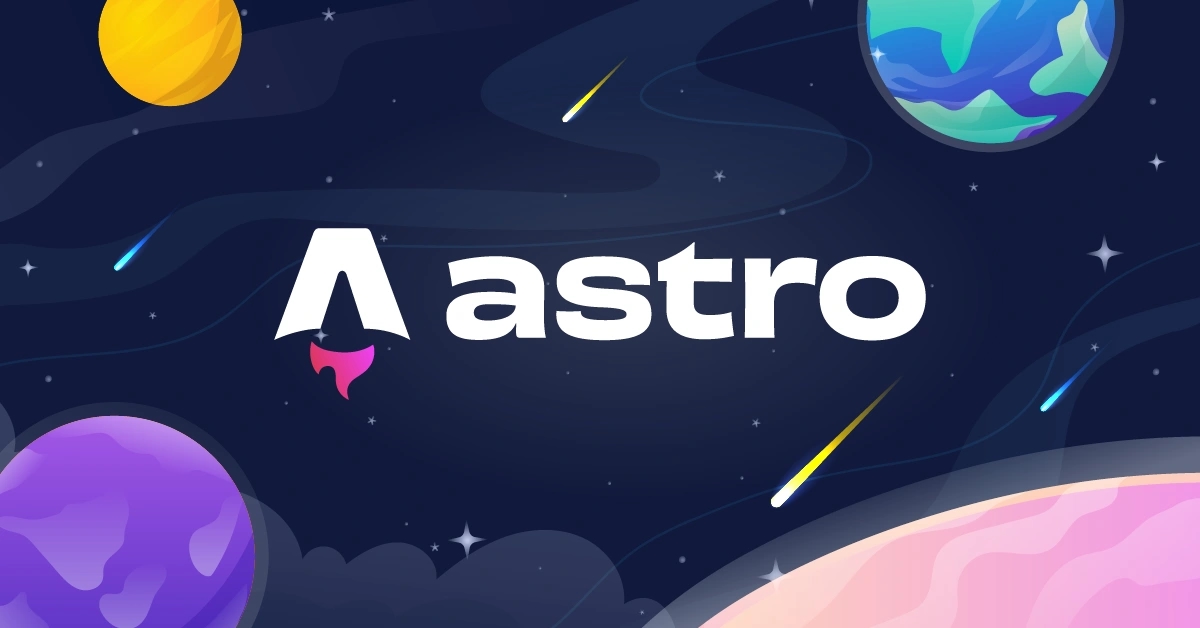
My experience using Astro
29 Dec 2023 • 5 min read
Introduction
I initiated my portfolio website back in February 2021, aiming for a flashy yet minimalistic design – a goal I successfully achieved.
Back then, Create React App (CRA) was the default choice for most, as frameworks like Next.js, Solid, Astro, etc., either hadn’t surfaced or hadn’t yet captured the limelight.
But there were a few major issues with my website back then,
- It wasn’t extensible - The UI was initially crafted based on the available information and looked good at the time. However, as more information needed inclusion, constant redesign became a necessity.
- It was resource-heavy - The inclusion of a marquee for the skills section resulted in a heavyweight animation. This, unfortunately, led to frame drops even on reasonably powerful systems.
Therefore, with the need to incorporate additional information, a redesign became imperative, ultimately driving the development of version 2.0.
For version 2 of my portfolio, my primary objectives were:
- Extensibility - This was more of a design requirement
- Ease of Maintenance - Involved decision around CSR vs SSR vs SSG
- Lightweight Structure - Optimise the assets & ship as little js as possible.
Why Astro?
The web development landscape is ever-evolving, and as I pen down this article, new frameworks are likely emerging.
Among the plethora of frameworks out there, Astro stood out to me for the following reasons:
-
Positive Reviews - Astro garnered a lot of praise from Youtube & Tech-Twitter, atleast for my use-case.
-
Emphasis on Content-Driven Websites - Astro marketed itself as the web-framework for content-driven websites, which aligned with me.
-
Flexible Rendering Options - Astro’s support for SSR and CSR, with a default preference for SSG, perfectly aligned with my requirements.
-
Ease of Use with Concise Documentation - The accessibility and minimal documentation of Astro made it easy to dive into without an extensive learning curve.
I hold the belief that things should not be overcomplicated unless necessitated. The ease of managing a static website surpasses that of a SSG website, which, in turn, is simpler than managing a SSR website.
Considering this, Astro made perfect sense for me as it enabled the judicious use of these features based on specific requirements.
What I liked about Astro?
Using Astro was a breeze. The speed at which I could develop was astonishing. It took me just four days to complete the major components of the portfolio website.
UI Features
With Astro, creating a SSG website was effortlessly seamless. It was configured to work in SSG mode by default, eliminating the need for any additional effort on my part.
In instances where I needed snippets of client-side JavaScript, Astro seamlessly accommodated that. It was as straightforward as incorporating that portion of the code within the <script/> tag.
It supported TypeScript across the board, supported scoped-styles, and what not. In my opinion, it supported everything anyone could have wanted.
Server Features
The contact page required an api-endpoint which would trigger an email when someone filled the contact form.
Surprisingly, Astro even facilitated this, requiring only a switch in app rendering to hybrid mode.
Other Features
Astro also came equipped with additional features such as the <Image/> Component, View-Transitions, and Content-Collections, which significantly eased the development process.
With all these features in the arsenal, the final website was optimized, while providing a seamless and enjoyable user experience.
What I disliked about Astro?
Despite positive reviews on Twitter and YouTube, it’s essential to note that the framework still has a few rough edges. The primary challenge lies not so much in these rough edges but more in the dated or missing documentation for certain features.
Here’s a few issues I faced during development:
- Importing CSS files ended up rendering different results in development & production.
- Content-Collections misses bits & pieces of documentation around working with individual pieces of data.
<Image/>Component lacked serious documentation, and making it work was more of a pain. This includes missing typing support for it.<Image/>Component has weird edge-case where it worked in development at times, but not in production.<Image/>Component has compatibility issues with different deployment services. This includes delay in Netlify, paid support in Cloudflare, etc.- View-Transitions had issues with client-side scripts for components being used across pages of the application.
- Lifecycle events associated with View-Transitions had unexpected behaviour where they fired off after images were loaded on the page.
- View-Transitions in-general felt like a half-baked idea, not generally from Astro’s implementation perspective, but the raw spec in general.
I want to clarify that my intention is not to criticize the framework. Rather, I aim to highlight the fact that, like any tool, it does have a few rough edges.
Conclusion
I thoroughly enjoyed working with Astro throughout the week or two that I dedicated to building this website.
Aside from encountering a few rough edges, I didn’t find myself needing to Google or delve extensively into the documentation. An initial read-through proved to be sufficient for most of the development process.
Additionally, I’ve never experienced such a swift pace in developing a website from scratch. Astro truly facilitated an efficient and accelerated development process.
Speaking of the portfolio, I’m pleased with how it turned out. Acknowledging my limited design skills, I drew significant inspiration from Zeno Rocha’s portfolio.